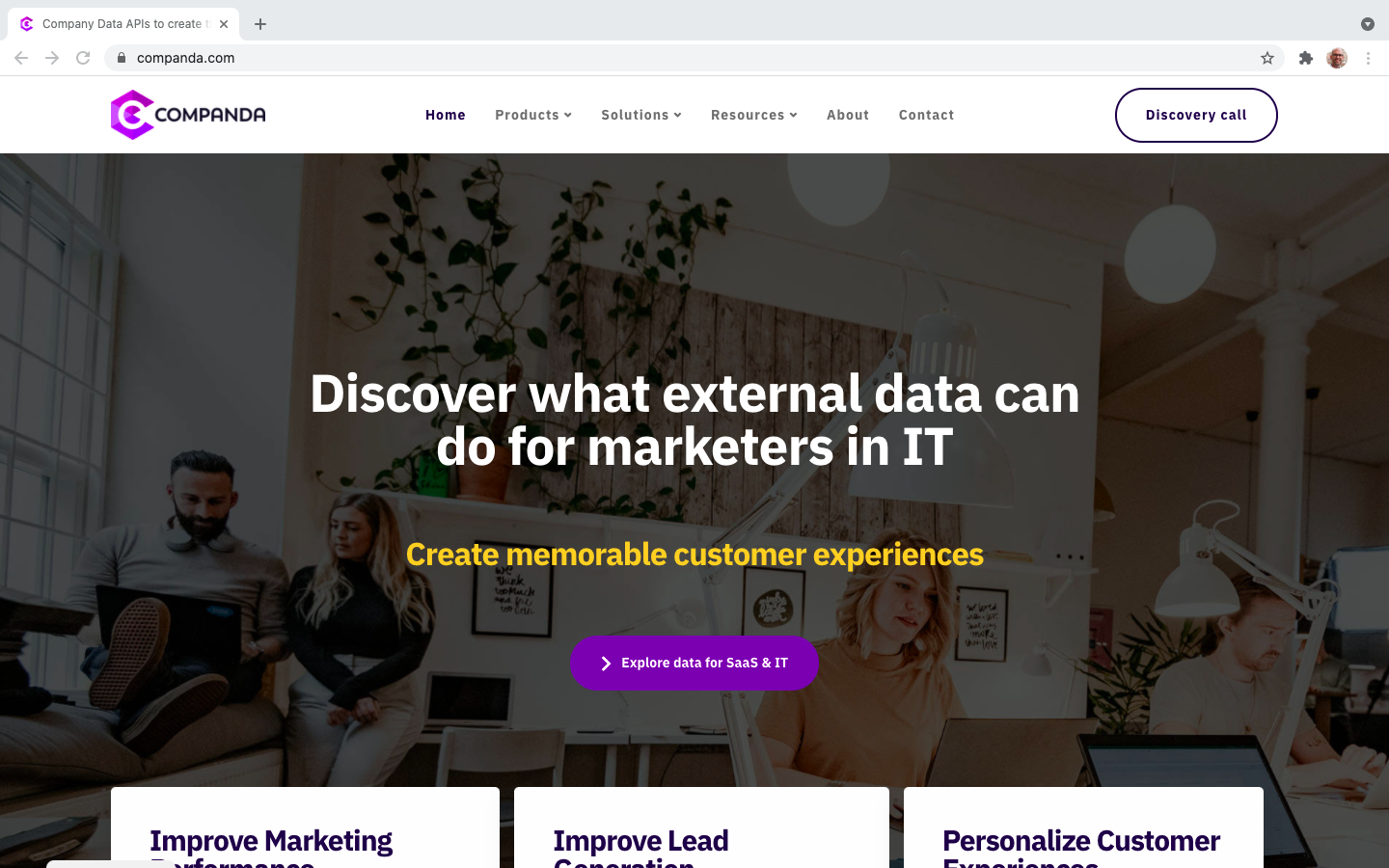In 1998 Jeff Bezos had a vision for the internet. At that time Amazon existed for four years and was quickly becoming a giant online book and music empire. In that year, Bezos said in an interview with the Washington Post: “If we have 4.5 million customers, we should not have one store but 4.5 million stores.”
In other words, Bezos wanted the Amazon homepage to focus on the attraction of each individual visitor. Meanwhile more and more marketers realize that it’s important to have a dynamic, interactive website. The same marketers still find it difficult to ensure that their homepage meets the needs of the most important visitors.
Real-time personalization is the key to success here. It ensures that a website attracts the attention of different visitors. In this article we explain in four steps how you can get started with B2B website personalization.
Why would you apply personalization?
Personalization has proven itself as a powerful tool to improve the conversion of your website. For example, a simple type of personalization is personalizing an email in which you start with the first name of the recipient. It’s a slightly bigger challenge to get started with advanced personalization to make sure you get the attention of the right person at the right moment.
In a study done by Gartner, 46% of B2B customers indicate that custom offers are extremely important. Data from Econsultancy shows that there are obstacles for improving personalization. For example, 47% of companies indicate that there are IT obstacles.
Nevertheless, Gartner expects a profits increase of up to 15 percent for companies that apply personalization technologies in the right way by 2020. In addition, personalization offers advantages such as more interaction (engagement) with the target audience, more and better conversions, more efficient communication and higher loyalty.
How to personalize your website in 4 steps
Many marketers see the personalization of their website as a big challenge. Where do you start and how do you make sure that you deliver specific content for the right audience? With the help of this step-by-step guide you can immediately start personalizing your website for maximum impact.
1. Make a baseline measurement
Start with assessing the current situation of your website. Answer the following questions:
- Who visits your website?
- Are your visitors the people you are looking for?
- Do visitors find what they are looking for?
- Do visitors find the content you want to show them?
Some of these questions can be answered through analytics tools such as Google Analytics and Google Search Console. For example, you can find out about which channels are the main source of visitors for your website, which pages they visit and how long they stay on your site. The next step is to divide this data into different categories.
2. Segment your visitors
By segmenting your visitors you can get a clear overview of the value of your visitors. Research from Demandbase shows that 82% of the visitors on B2B websites are not potential customers. It’s therefore important to reach that 18%.
There are three different types of data in which your visitors can be categorized:
- Context – When did the visitor visit your website and through which device
- Company information – Think of industry, company size etc.
- Behavior – Which pages did the visitor visit and how often.
Contextual data helps you to understand what the best approach is for potential customers. Someone who visits your website in the evening may have other intentions compared to a visitor who visits your website during the day. In addition, the focus of people is different during the week than during the weekend.
Thanks to company information, you can further personalize your information. If you are able to find out which companies visit your website, you can appeal to highly targeted companies or even those who work at these companies through Account Based Marketing.
Using behavioral data you can gain insights about the stage in the customer journey of your website visitors. For example, someone who visits your website for the first time needs information about who you are and what you do. Someone who has visited your website and specific pages more often probably needs more interaction. For example, these visitors could use an offer to attend a webinar or a demo. Website visitors who are already customers can be informed about new services or products.
3. Provide the right message for the right target audience
Many B2B marketers believe that they have to start from scratch in order to personalize their website. However, this doesn’t have to be the case. Often you already have relevant content such as a whitepaper, case study or ebook that you can easily personalize.
Suppose you recently wrote an ebook that is useful for IT companies. Then create a landing page on which you tailor content for IT companies. Use the same terms that these companies use, show clients and / or case studies from this industry that have taken your products and / or services or provide interviews with experts in this field. This will create recognition and trust with the visitors of the landing page.
You can go one step further with A / B testing. Tools such as Optimizely help you test and optimize the content on your page. With these tools you can make different versions of the landing page, with different texts and images. Afterwards, you can use the final version of the landing page that performs best.
4. Measure the results
With Google Analytics you can get insights into the results of your personalization efforts. Which visitors will stay longer on our website and come back more often once they have visited the personalized pages. Please note that a longer visit on the page does not always have to be positive. It can also mean that the website visitor is unable to find what he or she is looking for.
You can also link Google Analytics using our SEE-API. This will provide you with immediate insights into which companies have visited which pages. Suppose you have set up a landing page aimed at IT companies then you can find out how many visitors of this page are active in this segment. Do many companies from other industries end up on this page? Then you could consider setting up a specific landing page for this group.
5 examples of website personalization
Website personalization can be done in various ways. In the examples below you can read about how you can personalize based on the journey of the customer, IP recognition, Account Based Marketing and which content you can adjust.
1. Personalized content suggestions based on reading behavior
You can use data to improve the relevance of content suggestions just as YouTube offers personalized recommendations. Segment your visitors in the different stages of their customer journey by applying lead scoring or auto tagging.
You can show content based on the stage of the potential customer if you add blocks of dynamic content to your website, for example by adding a pop up in the bottom corner. This way, you can improve the time that the visitor spends on the site and you can also speed up the customer journey.
These personalized content suggestions can be applied in blog articles or a knowledge center if you have that on your website.
2. Dynamic content based on role
You can also segment the visitors of your website based on their role. Collect leads with an additional question and use that to show personalized content. Ask this question in a form for a whitepaper download, a webinar registration or when your visitor interacts with a chatbot. Enrich your database and use this for personalized email drip campaigns through marketing automation or adjust your website accordingly.
Below you can see an example of Personyze, where the homepage is personalized for a technical professional and for someone with a management role:
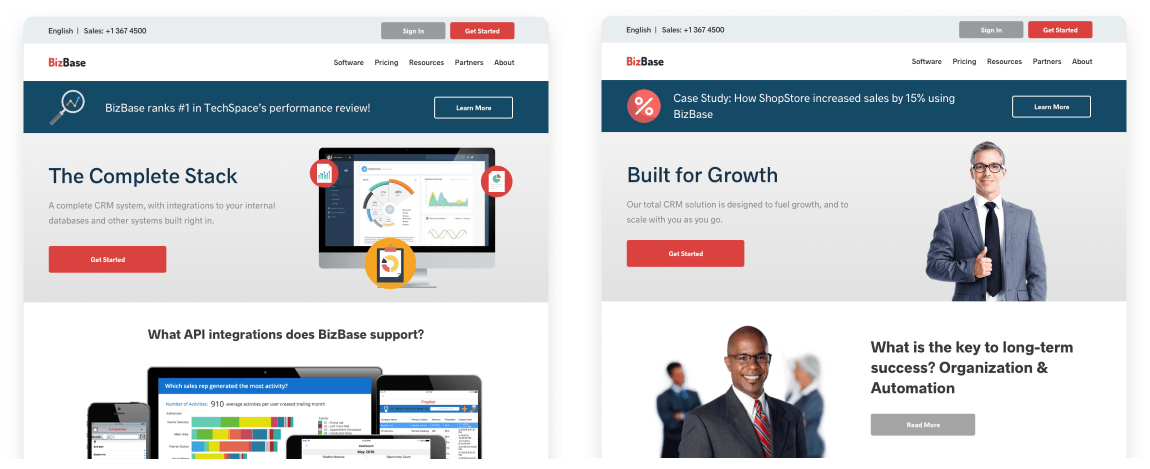
3. Personalized homepage based on industry with IP recognition
Potential customers want to know that you understand their industry. That’s why paid ads have a better click rate when you mention the industry of your audience in the ad text. And what if you use the same principles for your homepage?
You can personalize the entire homepage by linking IP data from website visitors to their company and industry. This is exactly what Citrix has done. Based on the industry, they change the prominent header of their homepage.
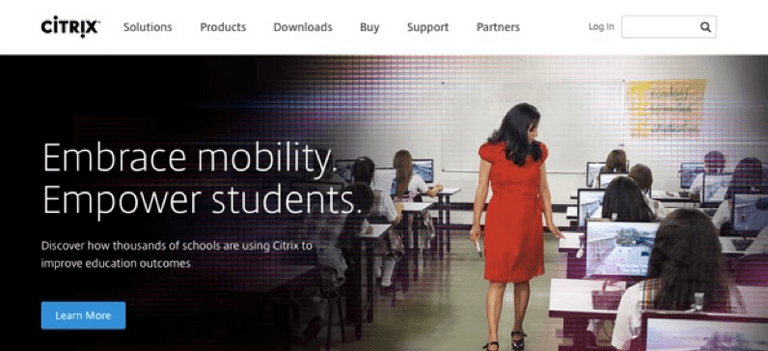
The results are pretty impressive. On average, Citrix’s homepage personalization resulted in an increase of 30% in clicks on the homepage banner, an increase of 10% on pages viewed per session, an increase of 4% of the average session duration and a general decrease of bounce rate by 7%.
Below you can see how we personalize the homepage based on the IP address and industry data of the visitor. The title (H1) and header photo are adjusted real-time when a visitor arrives from the sector Saas & IT. This solution is based on personalization software Google Optimize in combination with our SEE API.
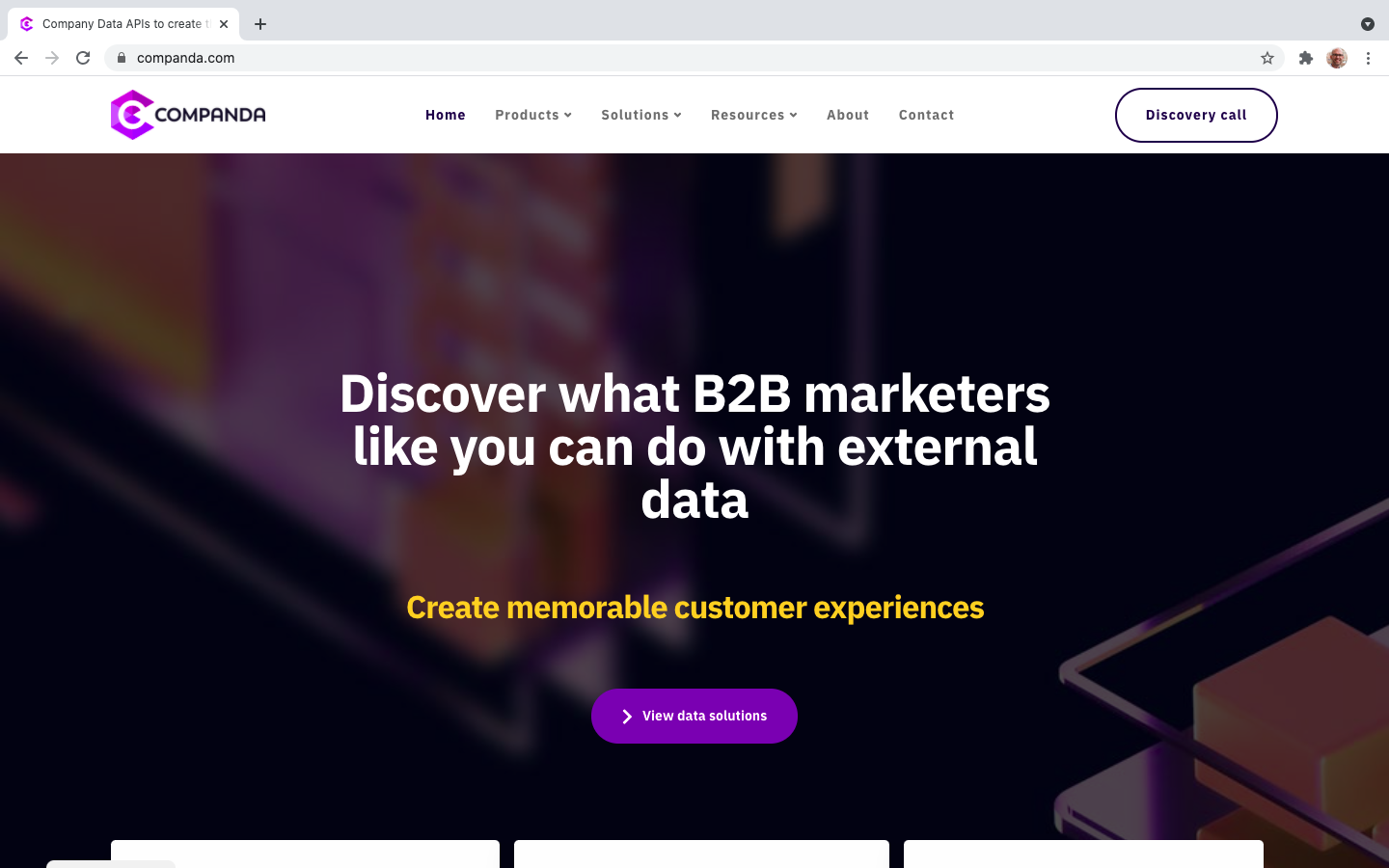
The personalized version for SaaS & IT companies looks like this:
4. Personalize your call-to-actions
You can place personalized call-to-actions (CTAs) in the content of your website, for example on the pages of your blog or on confirmation pages. For example, you could add a webinar CTA for a visitor who hasn’t yet had any interaction with your company but is interested in your solutions. And if you know that your visitor is already a customer, you could show a CTA for an upsell.
The figures speak for themselves. An American marketing automation supplier did research on this and it turned out that personalized call to actions convert no less than 202% better.
5. Personalization for specific companies in Account Based Marketing
With Account Based Marketing, you focus your marketing activities on a limited number of specific companies and the persons of those companies who are involved in the decision making process. You can use the company name to personalize your website based on IP recognition.
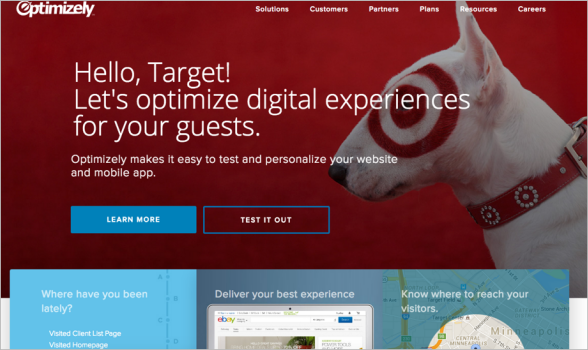
Optimizely focused on a specific list of companies such as Disney, Target, Adidas and Microsoft. To support their sales department, Optimizely created 26 different versions of their homepage, uniquely personalized for these 26 companies (source). Each page offers a custom made title, a link to a company specific article and a background image to improve the click rate of the homepage.
The result was, among other things, an increase of 117% in the number of visitors who started the account creation process.
Website personalization in practice
For more tips on personalization, we spoke with Gerard Rathenau – an independent digital analyst with extensive experience in the field of personalization: “Before you start personalization it’s important that you’ve covered the basics. By this I mean the technical side of your site, the content and your website forms. As far as technology is concerned, think of, among other things, the loading time of your website, pages that no longer exist (404 errors) and javascript error messages.
Covering the content means making sure that the content is ok for the landing pages that are mainly focused on paid traffic. As far as personalization is concerned, you should look carefully at the questions that your target audience wants to have answered. To get these answers, you can use the keywords from your own search engine on your site or you can get this information from the support department. And if you don’t have that, sales can also help you with the questions of your target audience. Online surveys are also a great tool to get this information. If you know what information your potential customers look for on your website, do you offer this information? What stops them from asking for a quote or ordering your products?
It’s also important to map your conversion steps. If you do that, you will know what you need to personalize.
Split this out per channel, for example Google Ads or email marketing. This way you also know which channels are eligible for personalization. If you do that, make sure you focus on real KPIs that matter. That means no vanity statistics such as the open rate in email marketing.
In short: before you start personalization, make sure you know what motivates your visitors to buy from you!”
Personalization software
In order to get started with website personalization, you need software to do this. If your website uses a Content Management System (CMS), you can generally personalize all your content with it.
There are also various online tools that you can use for personalization. Here are a few:
- Google Optimize – the free conversion optimization tool from Google that you can also use for personalization. With this tool we personalize our website to full satisfaction.
- Personyze – Personalization tool with a free account for 5,000 pageviews p / m, paid account $ 149 for 50,000 pageviews p / m.
- Optimizely – Best known as A / B conversion optimization tool, also with personalization options. Price on request.
- Evergage – Real time personalization and customer data platform (CDP) for one-on-one personalization. Price on request.
- Data Management Platforms (DMPs) such as Tealium and Blueconic.
- Companda SEE – our own API shouldn’t be left out from this list. With it you can empower any personalization solution to provide the perfect customer journey to your website visitor based on industry, number of employees, company name, location and much much more.
Conclusion
Website personalization is one of the most important future strategies for B2B marketing. It offers B2B companies the opportunity to greatly increase the interaction with website visitors, which leads to better communication with your target audience and ultimately more qualified leads.
The big advantage of website personalization is that you can immediately get started! Check which people and companies are currently visiting your website and how you can tailor your existing pages accordingly. After that, measure the effects of your changes and polish your pages where necessary for even better results.
